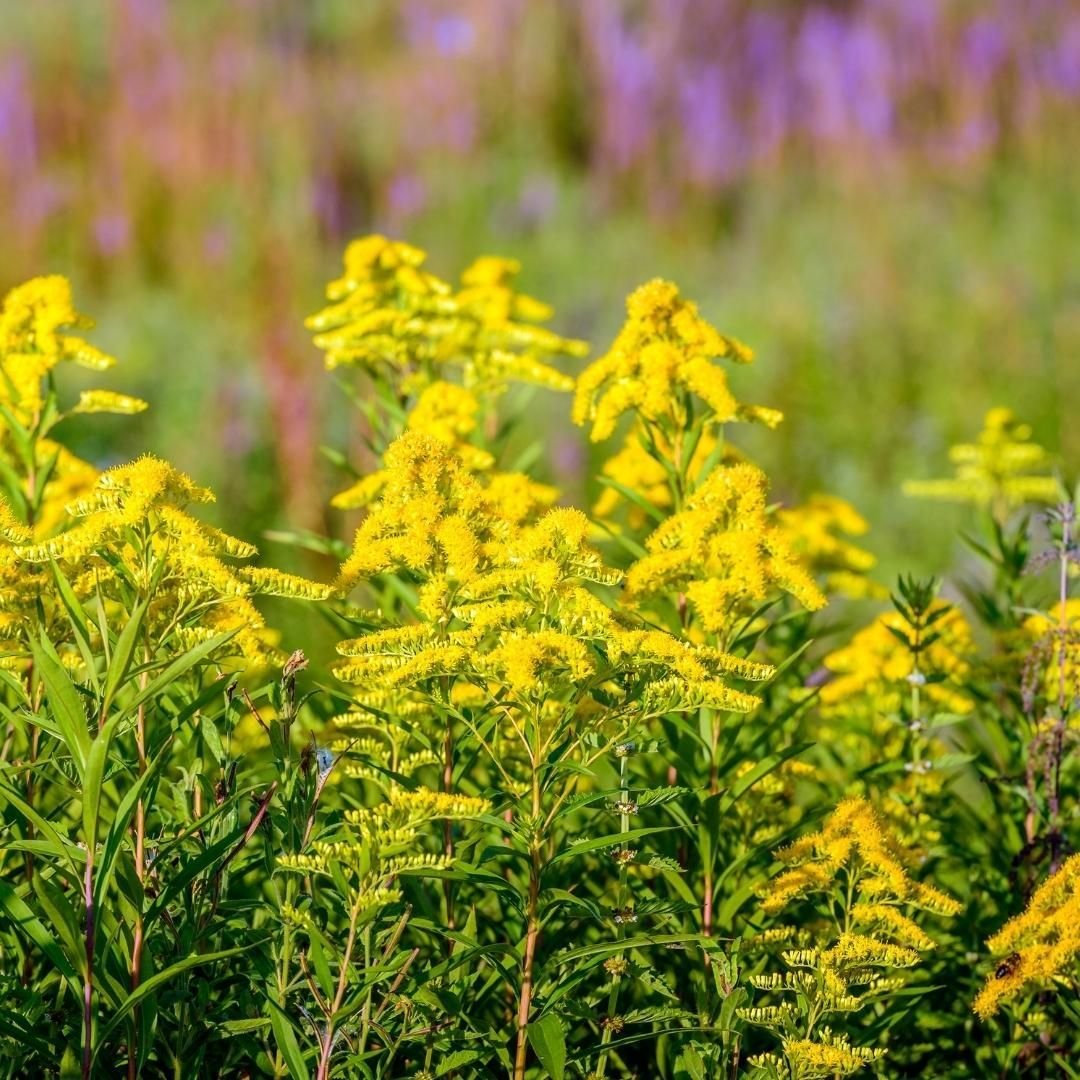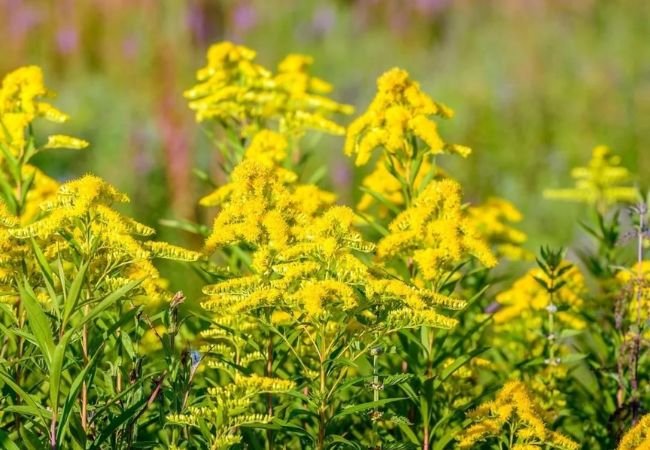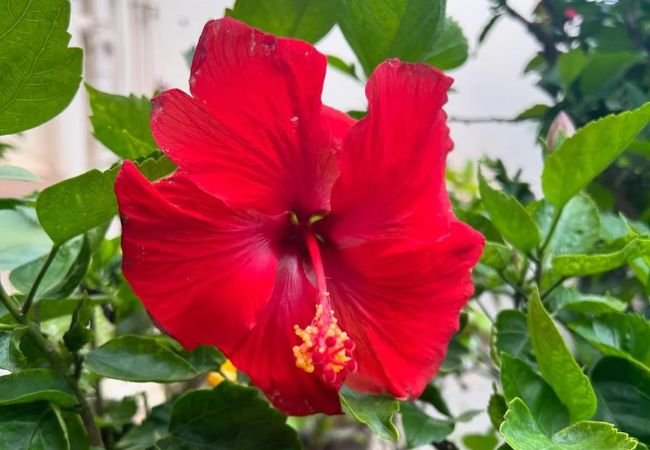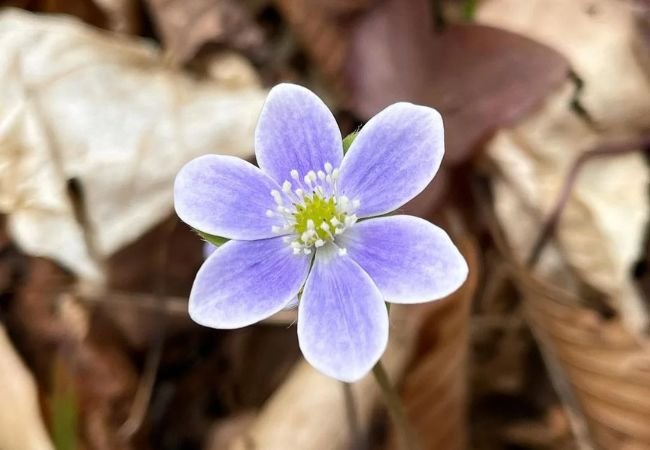Discover how to grow Goldenrod, a native American plant with bright yellow flowers. This guide covers planting, care, and tips for cultivating these late-summer blooms across various US regions.
Have you ever seen tall plants with clusters of tiny yellow flowers blooming in late summer? That’s likely Goldenrod! These native American plants are not only beautiful but also great for pollinators. Let’s explore how you can grow these golden beauties in your garden.
Certainly! Here’s a chart with information about Goldenrod flowers:
| Aspect | Details |
|---|---|
| Botanical Name | Solidago spp. |
| Common Name | Goldenrod |
| Plant Type | Perennial |
| Hardiness Zone | Zones 3-9 |
| Sun Exposure | Full sun to part shade |
| Soil Type | Well-drained, can tolerate poor soil |
| Watering Needs | Low to moderate; drought-tolerant once established |
| Growth Habit | Upright, clumping |
| Height/Spread | 1-5 feet tall / 1-3 feet spread |
| Special Features | Late summer to fall blooms, attracts pollinators, deer resistant, can be used in naturalized and meadow gardens |
What is Goldenrod?

Goldenrod, or Solidago, is a group of plants known for their bright yellow flowers. They bloom in late summer and fall, adding color to the garden when many other plants are finishing up.
For a detailed botanical description, check out the USDA Natural Resources Conservation Service plant guide.
Why Grow Goldenrod?
- Provides late-season color in the garden
- Attracts bees, butterflies, and other pollinators
- Native to North America and easy to grow
- Many varieties are drought-resistant
How to Plant Goldenrod
When to Plant
Plant Goldenrod in spring or early fall. To find the best planting time in your area, use the USDA Plant Hardiness Zone Map.
Where to Plant
Most Goldenrod varieties prefer full sun, but some can tolerate partial shade.
Soil
Goldenrod isn’t picky about soil but prefers it well-draining. Learn more about soil types from the University of Minnesota Extension.
Planting Steps
- Dig a hole as deep as the root ball and twice as wide
- Place the plant in the hole at the same depth it was in its container
- Fill with soil and water well
Caring for Your Goldenrod
Water
Water regularly until established. After that, Goldenrod is quite drought-tolerant.
Fertilizer
Goldenrod doesn’t need much fertilizer. In fact, too much can make them grow too tall and floppy.
Pruning
Cut back stems to about 6 inches in late winter or early spring.
Winter Care
Goldenrod is hardy in most of the USA and doesn’t need special winter care.
Common Problems and Solutions
- Powdery Mildew: This fungal disease can appear in humid conditions. The University of California Integrated Pest Management Program offers advice on managing powdery mildew.
- Rust: This fungal disease can cause orange spots on leaves. Learn about rust diseases from the University of Minnesota Extension.
- Spreading: Some Goldenrod species can spread aggressively. Choose clump-forming varieties if this is a concern.
Different Types of Goldenrod
- Solidago rugosa ‘Fireworks’: Arching sprays of tiny yellow flowers
- Solidago sphacelata ‘Golden Fleece’: Compact variety good for small gardens
- Solidago caesia: Shade-tolerant variety with arching stems
For more information on Goldenrod varieties, visit the Missouri Botanical Garden’s plant finder.
Interesting Facts About Goldenrod
- Goldenrod is the state flower of Kentucky and Nebraska
- It’s often blamed for hay fever, but the real culprit is usually ragweed, which blooms at the same time
- Native Americans used Goldenrod for various medicinal purposes
Growing Goldenrod in Different Regions
Goldenrod can be grown in most parts of the USA:
- In hot, dry regions (like the Southwest), it might need extra water
- In humid areas (like the Southeast), ensure good air circulation to prevent fungal issues
- In colder regions (like the Northeast), it’s hardy and doesn’t need winter protection
For region-specific gardening advice, check out the Cooperative Extension System website.
Using Goldenrod in Your Garden
- In wildflower gardens
- As a backdrop in perennial borders
- In pollinator gardens
- For cut flower arrangements
For more ideas on native plant gardening, visit the Lady Bird Johnson Wildflower Center website.
Goldenrod is a beautiful native plant that can add a splash of late-season color to your garden. Its ability to attract pollinators makes it a great choice for eco-friendly gardening. Why not add some of these golden beauties to your garden this year?
For more gardening tips and plant care guides, visit usagardenhub.com.






